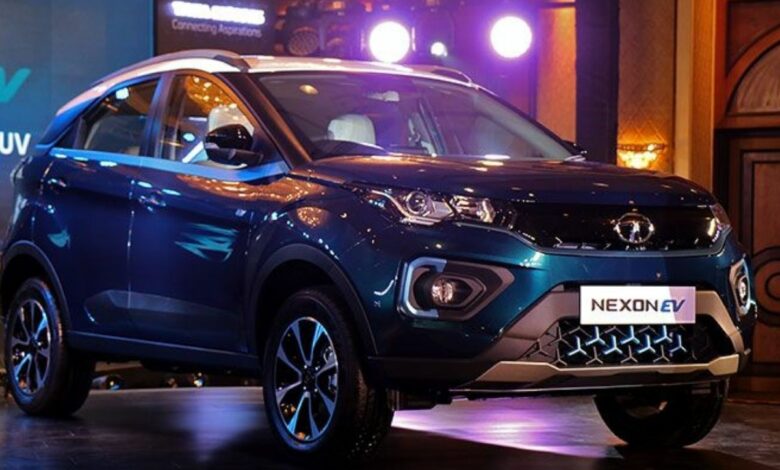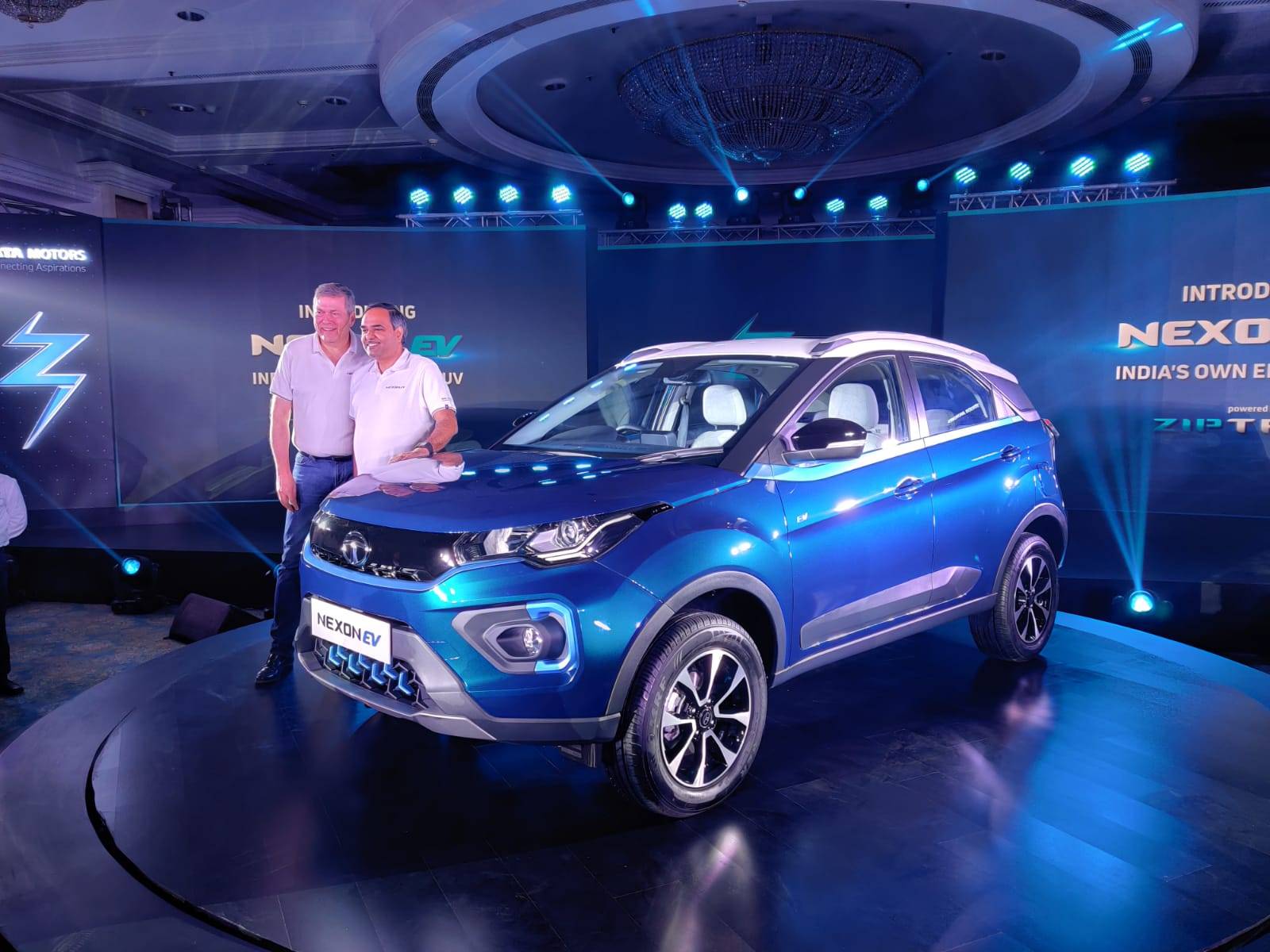Tata uses electric Nexon for EV drive thanks to global technology, JLR lessons, and customer feedback 2022.

That evening, it was hard to miss the cheers at Tata Motors’ office in Mumbai’s Andheri East neighborhood. It took a long time for happy faces to respond to the congratulations, and the company’s passenger-vehicle business had just made a big deal about itself.
The company’s Q3 FY22 numbers set several new records. A decade’s worth of sales: 99,002 units in Q3 FY22 and 35,299 units in December 2021. They also sold 3,31,178 vehicles in 2021, which was the highest number ever for passenger vehicles.
The good news didn’t stop there.
A lot more electric cars were sold in Q3 FY22 than Q3 FY21. Tata Motors sold 5,592 electric vehicles in Q3 FY22, 345 percent more than in Q3 FY21. Electric vehicles now account for 5.6 percent of all passenger-vehicle sales, up from 1.8 percent in the same period last year.
The Tata Nexon electric SUV is the only model that can be blamed for this rise in high-voltage electric cars.

It has been a big part of Tata Motors’ EV drive since it came out in January 2020. It is the most popular electric vehicle in the passenger-vehicle market. More than 15,000 electric cars have been sold by Tata so far this fiscal year. The electric version of the Nexon has been the most popular.
On the reliability front, there have been no problems with it until now. In FY22, it had a 63.62% market share, which is the same as other companies (11 months). If you like the popular internal combustion engine (ICE) Nexon, this is a version of it. Global NCAP gave it a five-star safety rating when it first came out.
So, how did the electric Nexon write Tata Motors’ story? And where does it go from here?
It’s a big deal.
It was hard for Tata Motors to get off the ground with its first electric car, the electric Tigor, for the fleet market in 2017, and the electric Nexon turned that around. When Tata Motors learned from its mistakes and used new technologies to be more innovative, they increased.
Managing Director Shailesh Chandra says that we used global advancements in electric powertrains and cells in the Nexon EV to make an electric option for a wide range of Indian use cases. This is what he tells ET Prime.
Chandra says that using the E-design Nexon’s specifications, “it broke down the barriers to EV use like range anxiety, low performance, and durability.”
With the help of its subsidiary, Jaguar Land Rover (JLR), Tata Motors has learned how to make electric cars. The I-Pace was one of the first electric cars made by JLR. Tata’s new electric vehicles, which will be a mix of pure electric vehicles and ICE-based products, will also learn from JLR.
After the first setbacks, the automaker was able to solidify its EV strategy and use other Tata group companies to build and grow the EV ecosystem. Tata universe was one of these companies. A senior analyst at LMC Automotive says this made people more confident about buying electric cars.
Six businesses in the Tata group worked together to make electric powertrain components for cars, build charging stations, and help people get money for them. It was a risk that paid off when the electric Nexon was a big hit.
A statement about technology was made when Tata cars released the electric Nexon. It also helped Tata cars become more well known, and it set the stage for more electric vehicles from Tata, says Avik Chattopadhyay, co-founder of Expereal India.

By 2025, Tata Motors will have 10 electric cars on the road and be making a big show. This comes after the electric Nexon did well.
And it has a lot to do.
A strategy based on data
Chandra says that for the upcoming new electric cars, they will use a lot of things they learned from 22,000 customers over the last few years. “We have learned from the data we have gathered through the telematics provided in the car,” he says.
In Chandra’s words, this data is used to “optimize strategies and control algorithms to make vehicle systems more efficient.” This data comes from analyzing how people drive and how people drive in traffic. The automaker uses information on how its cars perform in different places and at different temperatures to make innovative battery thermal management and cabin-cooling performance that will help the vehicle run more efficiently and give it a more extended real-life range.
The car company has been getting information from more than 16,000-plus charging boxes that customers have installed at their homes when it comes to charging. The data is being used to make charging boxes more durable for Indian power. In addition, we learned a lot about how our customers trust and what their charging habits are. Chandra: “We’re using this information to make the charging time during “opportunity-charging” shorter by changing the car’s hardware and software.”
Tata Motors has set up a new company, Tata Passenger Electric Mobility, to show that it wants to promote green transportation and make electric cars.
Making electric cars part of another company means Tatas will one day list that new company as a separate company, which will have a better market value than competitors who don’t have electric cars. Srihari Mulgund, the partner at EY Parthenon, says this.
Tata Motors even got $1 billion from TPG Rise Climate to start a new business. The automaker plans to spend INR15,000 crore to make new electric products. As with the Nexon, all of its products will also be powered by its Ziptron high voltage platform. In addition, these products will have a robust set of connected and advanced driver assistance systems (ADAS), says Chandra. A well-thought-out plan and the ability to act quickly will help the company keep its lead over its competitors.
The Tatas may have done well in another way.
He thinks that Tata has done an excellent job starting a campaign about “build quality” for their cars. Many people have chosen a Tata car because it has a better crash-test score. Compared to a company that makes cars worldwide, Tata knows more about the customer’s problems because it is a local company.
There is just that Tata and Mahindra have finally come of age and are now on par with a Honda or Hyundai when it comes to styling, build quality and reliability, and customer service. People from Expereal India say that’s why they’re doing better now than they were before.
While electric cars are slowly taking over the market, there are things that every car company, including Tata Motors, will have to keep in mind.
People who drive electric cars have to deal with bumps and potholes, so
Any automaker that wants to make electric cars should make a car that costs between INR12 lakh and INR15 lakh and has a range of about 300 kilometers. With a 10,000km-13,000km run per year and a three-to-four-year break-even point, it should be possible for the EV to make money. Singh thinks that any car that hits this sweet spot will sell well.
But the upfront cost is still a big problem for electric cars in India. People who buy ICE Nexon can get them for about $7.39 million to $8.99 million (ex-showroom), compared to the electric Nexon, which costs about $13.99 million to $16.45 million (ex-showroom). So, making it more affordable and more localized can help Tata’s business, which is good.
There must be many charging infrastructures so that the customer doesn’t have range and road anxiety. Also, the value of an EV at the end of its lifecycle or when it can be sold will play a significant role in who wins the EV title.
In general, the resale value of an electric car is 25% less than that of a vehicle with an internal combustion engine. Singh of Deloitte India says that’s because the battery itself makes up 40% of the cost of the car. About six to eight years. Battery recycling or refurbishing is where the storms come in. There is some value in the batteries, but it’s a lot less than it used to be. Because of this, even the banks charge more money to loan money to people who buy electric cars.
On the other hand, some customers are willing to buy eco-friendly cars even though they have a lower resale value because they make less noise, have fewer vibrations, and are more comfortable driving. Any automaker that meets these requirements is likely to have a good selling point for their products.
At the moment, Tata Motors only sells electric cars in Nepal, and the company is likely to start selling them in other countries close by. Chandra says that if you want to compete in global markets, you need to think about design, performance, and body style. Some markets are more advanced than others when it comes to New Age technologies like connected cars and ADAS. To compete in the developed market, automakers will need to keep these things in mind.
There is no standard way to charge today. As a result, the Indian cars need to be able to trust the country where they will be sold. That’s a big problem that automakers need to solve, or the world needs to move toward a standard that all-electric cars can use. Singh of Deloitte India thinks that more local assembly near the market will be required because the automakers add less value to the EVs they make, which will cut down on the cost of shipping things over long distances.
Chandra says that lower battery prices and new technologies like cobalt-free chemistries and better thermal-management systems are crucial to lowering the cost structure while still keeping quality and safety high, so these things are essential.
Making electric cars requires a lot of power electronic parts that have to be imported because there aren’t any factories in the country that can make them. The cost structure will be more efficient if these parts are made in the same place. In addition, combining several power electronic parts will help cut costs and weight while driving the vehicle more durable from a quality and safety standpoint.
Automakers will make less money from service and spare parts because electric cars have fewer moving parts and less control over the whole supply chain. So, car manufacturers will have to start looking at another way to make money: subscription-based connected features. Even battery swapping or renting could be a way to make money.
The bottom line is:
Chattopadhyay from Expereal India thinks that by 2030, electric cars made by Tata Motors will make up more than 1% of all passenger-vehicle sales at current prices if 400,000 vehicles are sold each month by then.

Today, more than 60% of Tata Motors customers who buy electric cars are first-time buyers or use them for their primary transportation, which compares to 30% a year ago. In Chandra’s words: “The word of mouth from these customers is helping us even more to grow our customer base.”
There will be a lot of new electric cars coming out in the next two or three years so that the consumer will have a lot of options. Automakers who know which products are popular with customers and which ones are new will be able to stay in business for a long time.
Tata Motors is working with Tata Power to build a charging station network across the country. They hope to stay the top brand in the field of green transportation.
There are a lot of changes that could happen.
edited and proofread by nikita sharma



